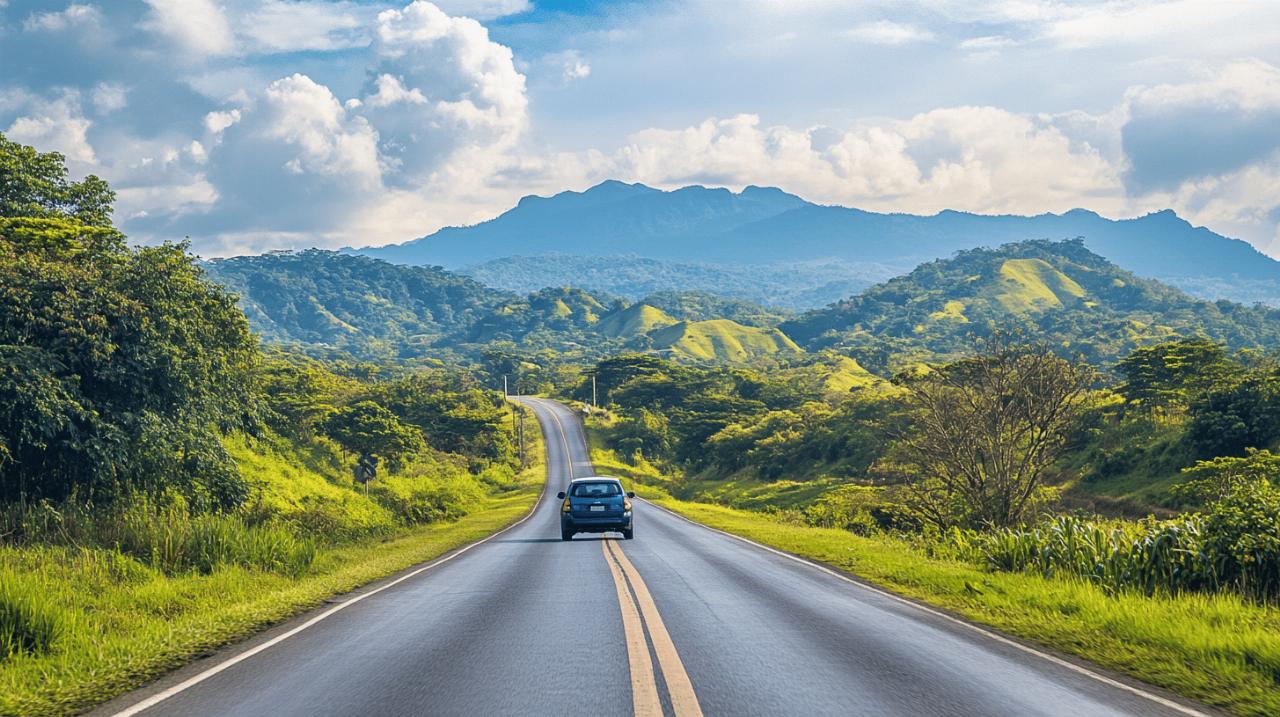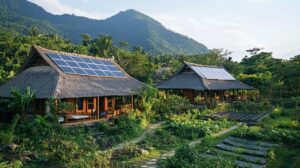Setting out on a Costa Rica road trip opens up a world of diverse landscapes, from cloud-covered mountains to sun-drenched beaches. Mastering the seasonal variations can transform your journey into an unforgettable adventure. For freedom and flexibility, having your own vehicle grants access to hidden gems beyond typical tourist spots.
Navigating costa rica's diverse road conditions
Road quality throughout Costa Rica varies dramatically depending on your location. While main highways connecting major destinations like San Jose to Manuel Antonio or La Fortuna are typically well-maintained, venturing off these primary routes brings new challenges. Planning your route carefully beforehand ensures smoother travels.
Mountain routes vs. coastal highways
Mountain roads in regions like Monteverde and Bajos del Toro feature steep inclines, sharp turns, and occasionally unpaved sections that demand careful navigation. These routes offer breathtaking views but require attentive driving. By contrast, coastal highways along the Pacific region generally provide smoother surfaces and straightforward navigation, though they can become congested during peak tourist season from December to February. Downloading offline maps before departure is essential since signal can be unreliable in remote areas. You can find comprehensive guidance about navigating different terrains and choosing the right vehicle on https://www.elrinconcunqueiru.com/ where they provide specific information about selecting ideal vehicles for airport pickups and Costa Rican travel.
4×4 requirements during rainy seasons
From May through November, Costa Rica experiences its wet season with rainfall averaging 12 inches monthly, dramatically affecting road conditions. During these months, formerly passable dirt roads can transform into challenging mud tracks, while water crossings become deeper and more hazardous. A 4×4 vehicle becomes less optional and more necessary, particularly when visiting remote destinations like Drake Bay or exploring the Osa Peninsula. The rainy season brings lower prices and fewer tourists, but requires more preparation regarding vehicle selection. Some rental companies offer 4×4 campers which provide both transportation and accommodation, potentially reducing overall travel costs while ensuring capability on challenging terrain.
Optimal driving itineraries through varying climate zones
Embarking on a Costa Rica road trip gives you unparalleled freedom to explore this biodiverse paradise at your own pace. Renting a car in San Jose, where most rental companies are located, provides the flexibility to discover hidden gems beyond tourist hotspots. The country's diverse climate zones create distinct travel experiences throughout the year, making timing a crucial factor when planning your journey.
With well-paved highways connecting major destinations and many secondary roads requiring careful navigation, a thoughtfully planned itinerary based on seasonal weather patterns can transform your Costa Rican adventure. For many routes, a 4×4 vehicle offers added security and accessibility, especially when venturing off the beaten path or visiting during the green season.
Dry season routes (december-april)
The dry season presents ideal conditions for exploring Costa Rica by car, with minimal rainfall and pleasant temperatures throughout most regions. Starting in San Jose, travelers can follow a clockwise route that maximizes weather advantages while minimizing driving times. Begin your journey east to Puerto Viejo (4-6 nights) to enjoy the Caribbean coast, then head northwest to Bajos del Toro (2-4 nights) and La Fortuna (3-5 nights) where Arenal Volcano offers spectacular views and thermal springs.
Continue to Monteverde Cloud Forest (2-4 nights) for remarkable biodiversity before driving to Pacific coast destinations like Montezuma (3-5 nights), Manuel Antonio National Park (2-4 nights), and Uvita (2-4 nights). During this peak tourist season (December-February), advance bookings for accommodations are essential. March and April offer a sweet spot with dry conditions and fewer crowds. Road conditions are generally at their best during these months, making it possible to navigate many routes without a 4×4, though one is still recommended for more remote destinations.
Green season adventures (may-november)
The green season transforms Costa Rica's landscapes with lush vegetation and fewer tourists, creating a different but equally rewarding road trip experience. This period, particularly May, offers exceptional wildlife viewing opportunities across the country. A modified itinerary during these months might focus more on the Pacific coast early in the season when rainfall is less intense, gradually moving toward the Caribbean side, which experiences its driest period in September and October.
When traveling during the green season, a 4×4 vehicle becomes almost essential due to potential muddy roads and river crossings in some areas. Daily drives should be planned for morning hours when rain is less likely, with flexible afternoon schedules to accommodate typical afternoon showers. The route from La Fortuna to Monteverde requires particular attention during this season, as does access to more remote destinations like Drake Bay. Budget-conscious travelers will appreciate the significantly lower prices for accommodations and activities, with savings often offsetting the additional cost of a 4×4 rental. Remember to drive slowly, use offline Google Maps for navigation, and avoid night driving due to poor visibility and road conditions.







